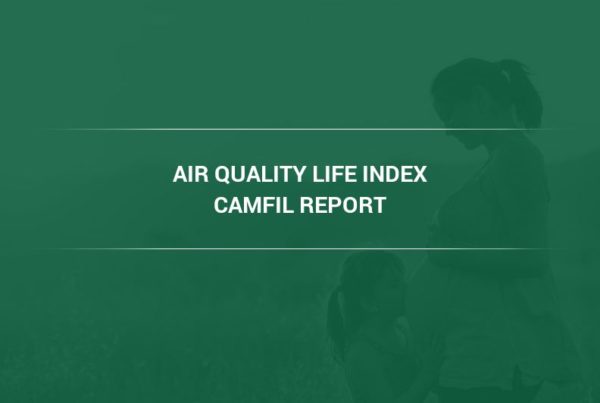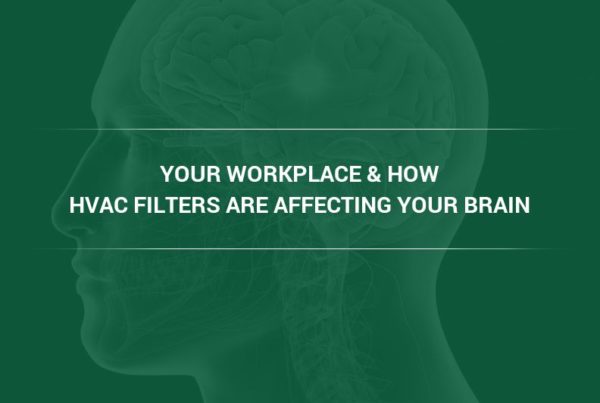Air Pollution and COVID-19 — Study Shows Exposure to Air Pollution Increases Risk of Getting Sick with COVID-19
A recent study led by the Barcelona Institutes of Health has provided the strongest evidence of a link between ambient air pollution and COVID-19. Specifically, the study was the first to show that chronic exposure to ambient air pollution increases the risk of developing the COVID-19 disease when exposed to the SARS-CoV-2 virus. This association was most pronounced in severe cases of COVID-19.
The study was published in Environmental Health Perspectives, an open access peer-reviewed journal supported by the United States National Institute of Environmental Health Sciences. The study relied on data from 9605 participants based in Catalonia, an area of northeastern Spain that encompasses the provinces of Barcelona, Girona, Lleida, and Tarragon.
SARS-CoV-2 Infection vs COVID-19 Disease
To understand the impact of the study’s results, it’s important to understand the distinction between SARS-CoV-2 infection and COVID-19 disease. COVID-19 disease occurs when an infection with the SARS-CoV-2 virus causes the symptoms we’re familiar with; shortness of breath, body aches, fever, respiratory irritation, and loss of taste or smell. However, SARS-CoV-2 infection can occur without causing any symptoms of COVID-19. These cases are referred as asymptomatic cases.
Some of the symptoms of COVID-19, such as fever and coughing, are the body’s attempts to kill or expel the virus from the body. In asymptomatic cases, the immune system is able to fight and eliminate the virus without producing any of these responses.
Because many people don’t get tested unless they are already showing COVID-like symptoms or have recently been exposed to a known COVID-19 case, and therefore may have carried the infection without knowing it, it is difficult to estimate how many SARS-CoV-2 infections have been asymptomatic.
The Link Between Air Pollution and COVID-19 Disease
Between June and November of 2020, participants, most of whom ranged from 40 to 65 in age, were tested for antibodies indicative of having been previously exposed to the SARS-CoV-2 virus. Approximately 20% of the participants who were tested for antibodies showed evidence of having previously had SARS-CoV-2 infection.
Participants in the study were classified as having had COVID-19 disease if they had previously been admitted to the hospital for symptoms, had received a positive result on a diagnostic test, or had experienced three or more COVID-19 symptoms after known contact with a COVID-19 case. 481 participants (5% of the sample) were classified as having had COVID-19.
To determine participants’ exposure to air pollution prior to the pandemic, researchers used a model developed by the Effects of Low-Level Air Pollution: A Study in Europe (ELAPSE) project to estimate the levels of various pollutants at their residential addresses during the 2018-2019 period. The ELAPSE model uses air pollution monitoring data, satellite observations, dispersion model estimates, land use, and traffic variables as predictors to estimate pollution levels in a given area.
The following pollutants were measured in the study:
- PM2.5 (fine particulate matter)
- Black carbon
- Nitrogen dioxide (NO2)
- Ozone (O3)
Researchers were able to draw two important conclusions from the results of the study:
- Air pollution exposure was NOT significantly correlated to an increased likelihood of SARS-CoV-2 infection. However, in asymptomatic patients, higher levels of air pollution were correlated with a greater magnitude of antibody response. In other words, the more a person was exposed to air pollution before the pandemic, the harder their body had to work to eradicate the virus.
- Air pollution exposure WAS correlated to the onset of COVID-19 disease, i.e. symptomatic COVID cases. In particular, NO2 and PM2.5 were most strongly correlated with the severity of the disease. Higher exposure to NO2 and PM2.5 meant more severe symptoms.
Though previous studies have indicated that SARS-CoV-2 may be able to survive on particulate matter pollution in outdoor air, thus increasing the distance it can travel, the results of this study did not support the hypothesis that air pollution aids the spread of COVID-19.
Instead, the study shows that air pollution exposure (particularly NO2 and particulate matter exposure) increases host susceptibility to the disease and decreases immune system capabilities required to fight it.
Why Do Polluted Areas Have More COVID-19 Cases?
Previous studies mostly examined symptomatic cases of COVID-19, but did not account for people infected with the SARS-CoV-2 virus who were asymptomatic. The problem with using samples that only contain infected individuals with symptoms is that it is impossible to distinguish whether long-term exposure to air pollution aided the spread of the virus, or long-term exposure to air pollution increased the likelihood of developing symptoms and serious complications when infected with the virus.
If the former were true, higher instances of COVID-19 disease in more polluted areas could be attributed to other factors characteristic of those areas such as higher population density.
By including more than just hospital patients to account for asymptomatic cases, this study has been able to isolate the presence of the virus from the onset of symptoms and examine their relationships to air pollution exposure. As a result of discovering this distinction, we have further evidence that adequate air filtration and ventilation in public and residential buildings will reduce the risk of developing COVID-19.
Air Filtration to Lower the Risk of COVID-19
The findings of this study have useful applications in schools, offices, hospitals, public buildings, and even at home.
In the United States, indoor air can be fifty times more polluted than outdoor air. This is because indoor sources of air pollutants, such as VOCs (volatile organic compound) off-gassing from furniture, cleaning fluids, air fresheners, and other sources are often overlooked. Additionally, pollutants that enter from outdoor sources become trapped in buildings with poor ventilation, leading to a buildup of these pollutants over time.
While the study looked at air pollution exposure prior to the pandemic, the two year period measured ended approximately six months prior to antibody testing, meaning that improving the quality of air we breathe now will improve our immune system responses to the virus in the near future.
Furthermore, the SARS-CoV-2 virus is spread via respiratory droplets and aerosols from infected individuals. These droplets and aerosols can be similar in size to particulate matter, and can be removed from the air by the same technology.
One solution recommended by our team of air filtration experts here at Camfil is the City M air purifier. The City M is a standalone in-room unit (meaning that it works independently of your building’s HVAC system and does not require any special equipment or installation) that uses both HEPA filters and activated carbon filters to target particulate matter and gaseous pollutants such as NO2.
Read more about the City M here.
About Camfil Clean Air Solutions
For more than half a century, Camfil has been helping people breathe cleaner air. As a leading manufacturer of premium clean air solutions, we provide commercial and industrial systems for air filtration and air pollution control that improve worker and equipment productivity, minimize energy use, and benefit human health and the environment. We firmly believe that the best solutions for our customers are the best solutions for our planet, too. That’s why every step of the way – from design to delivery and across the product life cycle – we consider the impact of what we do on people and on the world around us. Through a fresh approach to problem-solving, innovative design, precise process control, and a strong customer focus we aim to conserve more, use less and find better ways – so we can all breathe easier.
The Camfil Group is headquartered in Stockholm, Sweden, and has 33 manufacturing sites, six R&D centers, local sales offices in 30 countries, and about 4,800 employees and growing. We proudly serve and support customers in a wide variety of industries and in communities across the world. To discover how Camfil USA can help you to protect people, processes and the environment, visit us at www.camfil.us/
##
Media Contact:
Lynne Laake
Camfil USA Air Filters
T: 888.599.6620
E: Lynne.Laake@camfil.com
F: Friend Camfil USA on Facebook
T: Follow Camfil USA on Twitter
Y: Watch Camfil Videos on YouTube
L: Follow our LinkedIn Page
https://www.sciencedaily.com/releases/2021/11/211117103904.htm
https://ehp.niehs.nih.gov/doi/10.1289/EHP9726



